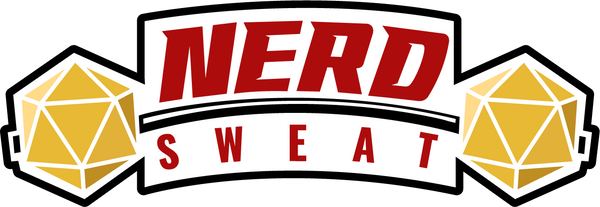
Balancing Challenge and Accessibility: Designing Quests for Mixed-Level Parties in a West Marches Campaign
One of the unique challenges of running a West Marches campaign—like our Common Grounds Guild of Greyhawk—is managing player groups of varying experience and power levels. Some adventurers might be fresh recruits, while others are seasoned veterans with multiple successful quests under their belts.
So, how do we keep the game engaging and fair for everyone without forcing players into level-specific silos? The key is smart quest design, flexible encounter scaling, and rewarding all players for their contributions.
1. Quest Tiers: Providing a Range of Challenge Levels
Since players in a West Marches game sign up for sessions based on their availability, it's crucial to offer quests suited to different levels. We categorize missions into tiers, allowing players to choose based on their comfort level.
- Tier 1 (Levels 1-4): Low-risk adventures like scouting missions, minor dungeon delves, and regional conflicts.
- Tier 2 (Levels 5-10): Greater dangers, such as warring factions, larger dungeon complexes, and encounters with legendary creatures.
- Tier 3 & 4 (Levels 11+): High-risk, world-altering threats that only the most experienced adventurers should attempt.
Example in Greyhawk:
A Tier 1 mission might involve investigating unusual goblin activity in the Gnarley Forest. Meanwhile, a Tier 3 quest could see high-level heroes confronting a demonic incursion from the Abyssal rift in the Bright Desert.
📖 Resource: Dungeon Master’s Guide (5e), Chapter 3: Creating Adventures provides a great framework for tailoring quest difficulty.
2. Encounter Scaling: Keeping Fights Fair and Fun
Since party composition changes each session, encounters must be flexible. Here are some ways we balance fights for mixed-level groups:
⚖️ Adjustable Enemy Stats
- Use minions or legendary resistances to tweak difficulty on the fly.
- Swap enemies’ attack bonuses and hit points based on the party’s strength.
- Use "boss plus reinforcements" encounters that allow for scaling up or down.
⚔️ Encounter Alternatives
- Multi-phase battles: Start with weaker foes, then escalate as necessary.
- Optional objectives: Encourage players to win by strategy rather than brute force (e.g., stopping a ritual instead of fighting the entire cult).
- Skill-based encounters: Allow non-combat solutions like persuasion, stealth, or magical trickery.
Example in Greyhawk:
A group of Level 5-8 adventurers investigating an ancient Suel ruin might face waves of animated guardians. The DM can increase or decrease enemy reinforcements based on the party’s strength, or offer an alternative solution—like disabling the ruin’s arcane power source.
📖 Resource: The Monsters Know What They’re Doing by Keith Ammann offers excellent advice on dynamic combat balancing.
3. Rewarding All Players Fairly
A major challenge of mixed-level play is loot and experience. Low-level characters shouldn't be left behind, and high-level characters shouldn't get everything.
🏆 XP & Advancement
- We use a milestone leveling system to ensure steady progress for all players.
- Roleplaying and exploration also earn benefits, keeping sessions rewarding beyond combat.
💰 Loot Distribution
- Use a tiered loot system—low-level characters get gear suited to them, while veterans find rarer artifacts.
- Allow quest rewards to be reputation-based rather than just gold (e.g., gaining favor with the Greyhawk nobility or a powerful wizard).
- Use custom boons—temporary buffs, favors from NPCs, or small magical charms that benefit all players.
Example in Greyhawk:
After a Tier 2 mission saving a town from a hobgoblin warband, the low-level players might receive a rare potion and guild commendation, while the high-level characters gain access to a powerful general who can provide new information on Greyhawk’s political conflicts.
📖 Resource: Xanathar’s Guide to Everything includes ideas for unique rewards that aren’t just treasure.
4. Keeping Sessions Engaging for All Players
Beyond combat balance, it's crucial that everyone at the table feels involved.
🎭 Roleplaying Opportunities
- Create NPC interactions that reward both high- and low-level players.
- Let low-level players shine with social skills while veterans leverage their renown.
- Allow background-based storylines where players get moments in the spotlight.
🗺️ Open-Ended Missions
- Give parties multiple approaches to solving a quest (brute force, negotiation, stealth).
- Avoid “one-solution-only” puzzles that favor experienced players.
- Let the world react organically to player decisions.
Example in Greyhawk:
During a diplomatic mission in the Free City of Greyhawk, a newer player might persuade a merchant to aid them, while a seasoned adventurer negotiates with a noble house. Both are contributing, just in different ways.
📖 Resource: The Lazy Dungeon Master by Sly Flourish provides great advice on improvisational DMing and keeping sessions fluid.
Final Thoughts: Making West Marches Work for Everyone
Balancing mixed-level play in a West Marches campaign requires adaptability, but it also enhances the world’s realism. By designing quests with multiple tiers, scaling encounters dynamically, rewarding all players fairly, and ensuring every adventurer gets a moment to shine, we create a campaign that feels alive and engaging—no matter who’s at the table.
At the Common Grounds Guild of Greyhawk, we’re constantly refining our approach to make our campaign accessible to all levels of adventurers. Whether you’re a fresh recruit or a seasoned hero, there’s a place for you in the adventure!
Want to Join the Action?
Our next Guild Day at Common Ground Games is coming up—sign up, meet fellow adventurers, and see where the world takes you!
Additional Resources for DMs & Players
- Kobold Press’s Guide to Scaling Combat – koboldpress.com
- D&D Beyond Encounter Builder – www.dndbeyond.com
- Matt Colville’s Action-Oriented Monsters (YouTube Video) – Watch Here
See you on the battlefield, adventurers! 🎲🔥
